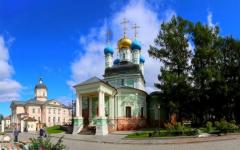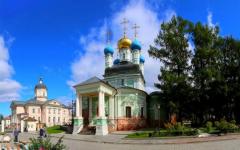Expressway... How often does this phrase appear! We all roughly understand what it is, but often we don’t know what kind of highways there are, at what speed it is allowed to drive on them, and how many autobahns there are in Russia. Let's look at the history of highways, their present and future.
History of appearance
The first expressway appeared at the beginning of the last century in Italy. In 1924, she connected two major cities- Milan and Varese. The length of the road was 85 km. It is interesting that the word “motorway” used by many came from Italy. By the beginning of the 21st century, more than 6,000 kilometers of highways had been built in the country.
A new tone is set from the very beginning by conductor Andrés Orozco-Estrada. He immerses himself in a sparse, period-conscious performance in which the dark and light aspects of this dryamic hyocosis are in perfect balance. Born in Colombia and trained in Vienna, Andrés Orozco-Estrada is one of the most sought-after conductors of his generation.
Plan, layout and cross-section of mountains, streets and roads
The emphasis of his artistic work lies in the romantic repertoire and Viennese classics. Andrés currently lives in Vienna. At least with the cornerstone from Hradec Králové to Olomouc. Paradoxically, the key link from East Ik to Central Moravia has existed for many years only on paper. The second pier was the end of the bus. In other words, all the villages agreed to the housing without reservation, until the designers drew it for hummingbirds.
Another well-known name for the road - “autobahn” - appeared in Germany. In 1932, the highway connected Cologne and Bonn; its length was only 20 km. Interesting fact: In Germany, more than 3,500 kilometers of expressways were built before 1941. To date, the country has more than 13,000 kilometers of road surfaces.
Federal highways
The core of Liberec's problem is the construction of a building from Turnov to Zined by the high priest Jesenik. There are no disagreements with environmentalists and local residents. However, the Liberec region stands next to it, and the shortest path comes. In Litomyšl, again, the fact is that the city does not want the city to reduce its development a little. It's aimed at a large arc over farmer John Vaata's land.
However, according to Toman, it was often a vague trap to only wonder why not set up a keyboard dock. “We can’t do anything, we don’t have a route, as was said, but, for example, in the High Mile mine no one had a route or planned it,” the nymph recalls.
Today, the expressway is the most used type of road worldwide. China occupies a leading position in the construction of such routes. Their length by the beginning of 2015 was almost 112,000 km.
In Russia, the construction of highways dates back to the times of the USSR. Unfortunately, it is not possible to count the number of highways built. Basically, highways in Russia are separate sections of roads with hard surfaces.
He now hopes that despite all the ambiguity, the key road can be completed in the year of Naji, the Ministry of Transport, which has made the said road a priority. Its repair has been requested by the park administration since its creation in the year The roads are in very poor technical condition.
Immediately after this, we began negotiations with our founder, that is, with the Ministry environment, about the allocation of funds to correct it. However, it took another six years to solve all the problems, including reworking the original project documentation and finding a suitable source of funding.
Driving conditions
Which route is considered high-speed in Russia? A highway is a road with a specific road sign and has several lanes for traffic in both directions, separated by a special fence or dividing strip. This road has no intersections with others at the same level (any intersections are possible only via a bridge or
The money needed for the renovation was ultimately managed by the Ministry of the Environment at less than 15 million crowns. As part of the repairs, all passages were created along their own roads and under adjacent bypasses, ditches were restored along the entire length of the road, but the road surface was repaired. In particular, new asphalt was laid in the section from Vysoké Lipi to the branch to Tok, then the section to Zadni Djerriszowice was then covered with a new gravel surface.
Laying a new asphalt surface. Correction of passage on the Czech road. Subsoil support using oak grate. From the beginning of December, traffic will only be on the left side of the road. This is a basic connection that provides transport services to the center of Ostrava in the direction of the intersection with Sokolska Street and ul. Cheskobratrsk. It also includes the reconstruction of the trolleybus line, which includes the installation of contact poles while maintaining the same transport system.
The movement of pedestrians, animals, and any types of transport whose speed does not exceed 40 km/h is prohibited on the expressway. These include bicycles, mopeds, tractors and any other self-propelled vehicles. Stopping is also unacceptable. public transport, and it is prohibited for cars and trucks to stop in areas not intended for parking.
Public lighting in the reconstructed part of the road will be replaced with completely new lights. From a technical point of view, the condition of the bridges is unsatisfactory, the flow compensators concrete structures destroyed, steel structures by corrosion, which is caused by water leakage. The repairs will affect both components that are hidden as well as external elements, said Moravian Highway Department bridge engineer Thomas Spinning Wheel because the entire section is in undermined areas.
The construction rush is preparing to put a roof over the heads of the homeless who now live in the bridges. We apologize for the decrease in comfort, but adjustments to the construction are necessary,” said Marek Meliczarek, head of the Ostrava administration. The city of Ostrava has been preparing the renovation of Českobratrská street since mid-April. This applies to the area from the intersection with Nadražni Street to the intersection with Sokolska Street. Not only roads and road surfaces are being reconstructed, but also water supply, sewerage and gas pipelines.
It is prohibited to make a U-turn and drive into gaps in the dividing strip; reversing and practice driving are unacceptable. So, when driving on the highway, be careful and do not break the rules.
Highways of the Russian Federation
The main routes in Russia begin in Moscow. This suggests that most of the roads were built during the times Russian Empire and re-equipped to meet modern requirements. The density of their network in the European part of the country is highest. The main roads radiate from Moscow. The further north you go, the less developed the highway network is. In the Far Eastern and Siberian Federal Districts, many roads are not connected to major highways. Communication with certain cities is possible only in the summer, and even then by air.
The work is divided into three stages. The object of the renovation is to clean the existing structure and its local fittings, and new corrosion protection will be applied. Old overhangs will be removed, the surface will be leveled, insulation will be repaired, an extension slab will be installed and road surfaces will be resurfaced.
In the Ostrava region, connectivity is also the basis of communication, where the share of local transport is high. Detailed description traffic and traffic shutdowns. Behind the closed section, a redirection route along the street is marked. Relocation of bus stops is not taken into account. In addition, the exit ramp will be closed on Bohuminska Street in the direction of Havirov. Traffic will be transferred to the left half of Českobratrská Street in this section. Travel from the city center to Haviřov and Bohumin will be marked with routes.
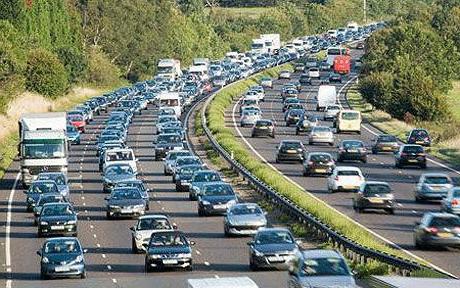 Russian highways have a total length of 1,396,000 km, and those with hard surfaces - 984,000 km. In accordance with the law on the classification of roads, they have different categories and are objects of property not only of the state, but can also be in the department of subjects Russian Federation, as well as private individuals. These include highways of federal, regional and municipal and local significance. There are also private roads.
Russian highways have a total length of 1,396,000 km, and those with hard surfaces - 984,000 km. In accordance with the law on the classification of roads, they have different categories and are objects of property not only of the state, but can also be in the department of subjects Russian Federation, as well as private individuals. These include highways of federal, regional and municipal and local significance. There are also private roads.
Information from Ostravskaya transport company. Pionersky Bridge and Dzh. Gagarin Square will not be served on line 110. Increase the safety of road transport; improve traffic flow; increase driving comfort; increase personal safety; specify the area. Cycling routes are used intensively as a network of connections between villages, urban areas and individual districts. Consequently, these connections are subject to strict transport requirements. Major cycling routes have been and have been illuminated in the past.
Federal highways
Federal roads have a hard surface and can be high-speed. Their list is approved by the Russian Government, they are state property. Such roads have a specific numbering with a letter in front. Which of them are federal?
Firstly, these are all roads connecting the capital of Russia - Moscow - with the capitals of neighboring countries, as well as with the administrative centers of the constituent entities of the Russian Federation. Such routes have the prefix “M”, they include:
Lighting method relative to the appropriate level of cycle routes
The higher the speed on the route, the higher the visibility. And this also affects lighting conditions. Roads within a city can be divided into different categories depending on their function. Using three types of roads, we can describe the road and street network of a city. In general, there are highways, conveyors and collection tracks.
The main roads are roads with high traffic capacity. They often connect individual highways and highways to each other. Conveyors are unblocked communications that carry high-speed roads and serve to fill them at appropriate locations. Collector roads are low to medium power communications that serve to connect local communications to the conveyor.
- M1 "Belarus" - "Minsk Highway" - connecting Moscow and Belarus bordering Russia.
- M2 "Crimea" - uniting the European highway E105 with Moscow, Tula and Kharkov.
- M5 "Ural" - having the most great length 1879 km and connecting Moscow with Chelyabinsk.
Secondly, these are roads connecting individual administrative centers. They have the prefix "R":
The faster the cycle route design speed, the more the cyclist needs to see. This affects the required lighting. Table 5 presents the requirements for this type of route. Table 1: Required light level for various types communications, Source: Indian Peninsula Cycling Infrastructure Design Guide.
Providing the above level of illumination must be achieved by installing lighting fixtures at the correct height and at the appropriate distance. The light should only illuminate the path, that is, be directed by a suitable shade of the upper part so as to slightly disturb the people or animals living in the place. The method of posting depends on the type of communication. On individual bike paths, columns can be placed on the edges of the inner grass. Poles located on the central median between the road and the bike path can accommodate two lighting bodies - one on the path and one on the road.
- P22 "Caspian" - one of the longest regional roads, with a length of 1381 km. It is part of the European highway E119, which passes through Moscow, Tambov, Volgograd and Astrakhan.
- P504 "Kolyma" - the length is more than 2000 km. Is a key highway Far East. Passes from Yakutsk to Magadan.
Each of the bodies can be positioned at a different height to illuminate the path of the cycle with the required light intensity. This design reduces the number of columns required and reduces vertical contamination of the road profile. The visibility of a route line is not determined by illumination intensity, such as the degree to which light is reflected from the route surface. As for surface cleanliness, best material is specific. Improvement of conditions along the cycle path can be achieved through further interventions.
For example, we can plan trees along a path to provide shade and reduce reflected light. It's about a level of comfort that improves comfort for cyclists. Street lighting must be strong enough so that people and things can be recognized at a certain distance. Especially from the point of view of the personal safety of women and children, the problem of light color is important. White light has the following advantages.
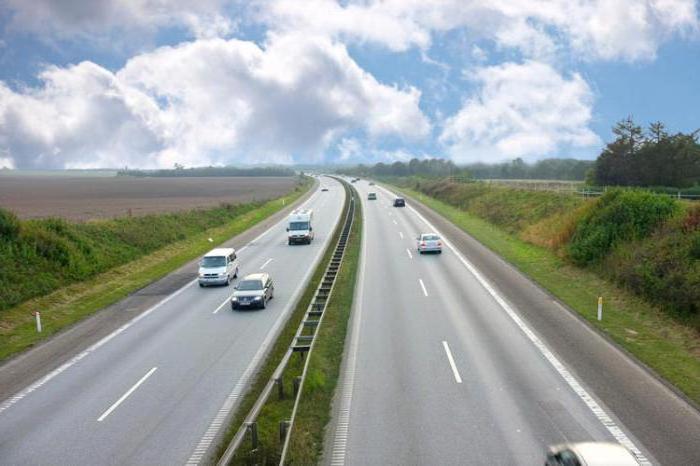 Thirdly, access and connecting roads that can connect cities with sea or river ports, airports or railway stations, as well as with other transport hubs. All of them are designated by the prefix “A”.
Thirdly, access and connecting roads that can connect cities with sea or river ports, airports or railway stations, as well as with other transport hubs. All of them are designated by the prefix “A”.
Will come into force on January 1, 2018 new list federal roads of Russia. There will be no division of routes into main roads and others. The changes also affected the numbering and names of roads. IN soon the speed on the highway will be at least 130 km/h.
On individual routes, it is easy to differentiate between fast and slow traffic, creating a contrasting pedestrian environment for efficient operation. The connection between Přerov town center and the railway station has been inoperable since reconstruction. The road is being raced and new asphalt will be used. Repairs are especially important after traffic flows, said Lenka Chalupova from the Transylvanian Town Hall.
On Friday, Jehovah Street will be closed to all traffic, including buses. Lines passing through this path will be on the way. It leads to two streets of Husov, Kozhnetska and Komensky, and then goes out to the streets of Shishava, where it runs along the usual route. Starting Saturday, the shuttle is valid for all traffic outside of buses, construction vehicles and trucks, from the end of the race again for all off-road traffic.
Road "Moscow - Noginsk"
The distance from Moscow to Noginsk is only 58 km. This route today runs along the M7 Volga highway, stretching from Moscow through Vladimir, Nizhny Novgorod, Kazan, and ending in Ufa. The road is of federal importance. It cannot boast of a large throughput capacity; now from 3 to 7 thousand cars per day can pass through it. Because of this, traffic jams and congestions often occur on the approach to Moscow.
For several years, drift will block the construction of the rope and bypass
By fixing Iekki Street, transport complications in Prusov will not end, rather the opposite. As soon as the Road Administration begins to gradually restore the three neighboring roundabouts - in Djeretna Square, the former Komuni and Hanbi. A number of important transport structures are planned for Perov next year, which will temporarily make travel through the city difficult. The coming of this year is the only possible time for these corrections. If the repair of the circular crosses remained until next year, it would have collapsed to the right in the First, said Mayor Vladimir Puchalski.
In view of the increasing traffic, the government decided to introduce a new high-speed highway "Moscow-Noginsk". This road will become an alternative to the M7 and will be tolled.
Toll highways have become very popular in developed countries, and now it’s their turn in Russia. The project began in 2014, with final commissioning planned for 2017. It is this road that will help relieve congestion on the main highways and allow residents of Noginsk to get to the capital in 20-30 minutes. This will be a great help for people working in Moscow.
The rondels in Djeretna Square and in the former Komnunas will be completely impassable - even for buses - from October. The bus route will pass through Yeech Street, Vertical Street, Hovstrek Street and continue through Hanoi Rondel. The Hanbe roundabout will be closed by a traffic sign from October to November. However, this rondel will be non-specific.
High-speed railways
The reconstruction of all three screens will cost seven million crowns, but the work done, but still the trick of the drivers in the First will not end. With great hope and hope, the residents of Utenkirsky, Kupirny, Rokyrsky and Zareshsky districts and all those who are on the way between Vinnitsa and Utnya agreed with the government when the government adopted a resolution on the reconstruction of the road at the Ministry of Transport and Communications.
Noginsk" will have a capacity of 30,000 cars per day. Having up to 6 lanes in one direction and a speed of 120 km/h, the highway will help minimize travel time and maximize comfortable conditions for drivers. The cost of travel on such a route is still unknown - either it will be fixed or it will depend on the mileage. At the moment, due to low funding, the expressway has only been partially built.
Route "Moscow - St. Petersburg"
At the moment, St. Petersburg and Moscow are connected by the federal highway M10 E105 “Russia”, which was put into operation in the 19th century. Peter I planned the connection of the two capitals and implemented his project, which became a backup for the water communication system. Today the length of the road is 706 km. Due to the small capacity and low speed of movement along this route, congestion often occurs. Up to 130-170 thousand cars travel along the highway per day, and the speed when approaching Moscow is up to 10 km/h. In view of this, several years ago a project for the construction of the Moscow-St. Petersburg M11 expressway appeared.
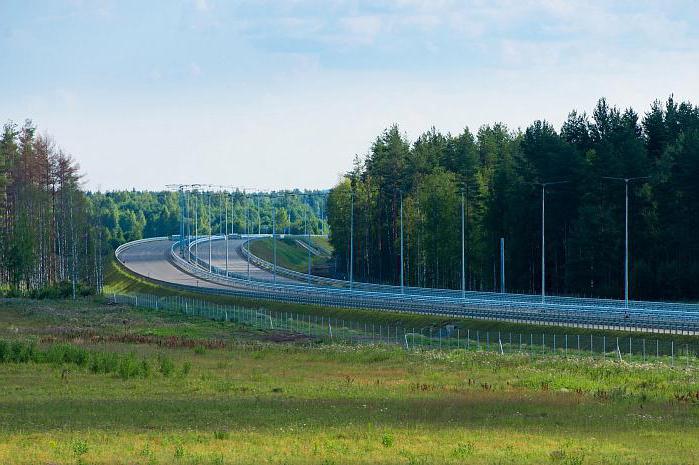 The Moscow - St. Petersburg road will be partially toll. Its length will be 684 km, and it will actually replace the existing M10 highway. The highway is planned to be put into operation in 2018. To date, several sections have been built: from 15 to 58 km from Moscow to Solnechnogorsk and from 258 to 334 km - bypassing Vyshny Volochyok in the Tver region.
The Moscow - St. Petersburg road will be partially toll. Its length will be 684 km, and it will actually replace the existing M10 highway. The highway is planned to be put into operation in 2018. To date, several sections have been built: from 15 to 58 km from Moscow to Solnechnogorsk and from 258 to 334 km - bypassing Vyshny Volochyok in the Tver region.
When creating an expressway, climatic conditions will have to be taken into account. The four regions through which the route passes have different climates: Moscow and Tver are temperate continental, while Novgorod and Leningrad are transitional continental-marine. All sudden changes in temperature can have a bad effect on the road surface and, as a result, render the resources spent unusable. Therefore, it is necessary to approach the choice of flooring very seriously. The future of the route itself directly depends on this.
The Moscow - St. Petersburg expressway will have from 2 to 5 lanes in each direction and a speed of 150 km/h. This will significantly reduce travel time between cities and improve conditions for drivers. The estimated cost of travel along this highway will be about 1,200 rubles. Everything will depend on the time of day and a certain section of the route. Thus, the Moscow - St. Petersburg road will become the second toll expressway in Russia. It should be clarified that approximately 60% of the road under construction will be toll, but you can also use the current free M10 highway.
"Moscow - Beijing" - a look into the future
The dream of connecting the West and the East has always glimmered in the hearts of enterprising people. Today, the construction of a highway connecting Moscow and Beijing has become possible. In 2014, a memorandum was signed between Russia and China on the construction of the Moscow-Beijing high-speed highway.
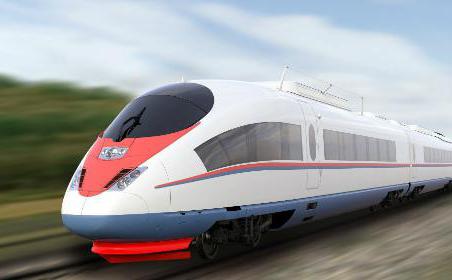 Today, a train connecting two countries spends 130 hours on the road - that's 6 days. When the project is implemented, it will be possible to travel from Beijing to Moscow in two days, covering a distance of 7 thousand kilometers at a speed of 350 km/h. Cooperation with China Railway will bring stable economic development to both China and Russia, and will also serve as a good connection between Europe and Asia.
Today, a train connecting two countries spends 130 hours on the road - that's 6 days. When the project is implemented, it will be possible to travel from Beijing to Moscow in two days, covering a distance of 7 thousand kilometers at a speed of 350 km/h. Cooperation with China Railway will bring stable economic development to both China and Russia, and will also serve as a good connection between Europe and Asia.
In addition, the Moscow-Beijing road will contribute to the development of the Ural federal district. It will connect stations in the following cities: Kazan, and then Astana (Kazakhstan), Urumqi and Beijing. The main and primary task is to connect Moscow and Kazan with a high-speed highway. For this, China will provide its technology and invest $10 billion. The project is planned to be completed by 2030.
"Moscow - Kazan" - new speeds
The Moscow-Kazan expressway will make it possible to reduce travel time to 3.5 hours. Its further extension to Yekaterinburg will make it possible to cover a distance of 1595 km in 8 hours. It is planned to travel up to 400 km/h along the route of high-speed trains. Accelerated regional trains will travel distances of up to 200 km at a speed of 200 km/h.
It is planned to use accelerated night long-distance trains on the main line, as well as freight and container transportation. Speed indicators will be 160 km/h. The Moscow-Kazan railway is planned to be completed in 2018. What will its construction give? First of all, it will provide jobs for the population. Experts argue that the construction of a road in the Urals will help revitalize the entire industrial complex. One kilometer of railway track will require about 16 thousand cubic meters of good crushed stone, about 15 thousand tons reinforced concrete structures very high quality, 125 tons of metal structures and 25 tons of rail material. Purchasing these materials from abroad will require a considerable amount of money, which will increase the cost of the project, which means it is necessary to improve production technologies locally and increase their quality. Local businesses can rise to the challenge and provide long years work population.
"Moscow - Don"
The federal highway "Moscow - Don" M4, so named at the end of the last century, was built in 1967. At that time, the route ran from the capital through Voronezh to Rostov-on-Don and had two lanes, 7 meters wide. At the beginning of 1991, the route was extended by 500 km, and Novorossiysk became its final destination. So, due to the annexation of different sections, a modern road M4 "Don". Interestingly, it became the first highway with a toll section of the route, which bypassed the village of Khlevnoye and was 20 km long.
Today the Moscow-Don highway is the best in Russia. Its only drawback is that in the summer it is crowded with cars both in one and in the other direction. Many from Moscow and its suburbs go with their families on vacation to the sea. The route leads to the Krasnodar and Stavropol territories, the Rostov region and the Crimea. At the same time, a lot of vegetables and fruits are brought back from the southern regions of Russia to Moscow, St. Petersburg and the northern regions of the country.
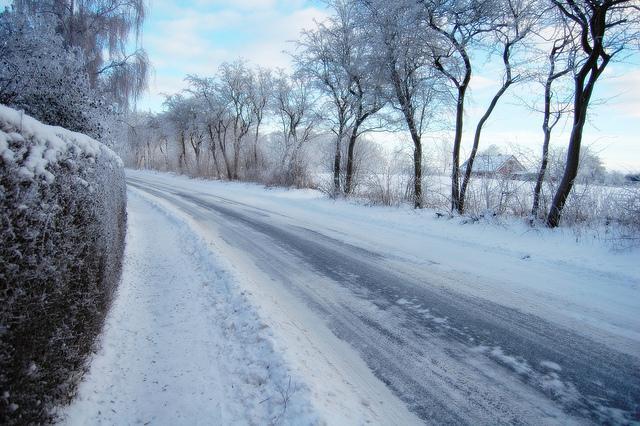 IN winter period time on certain sections of the road, especially in Krasnodar region Where the route passes through mountain ranges, heavy ice is possible. Bad weather could close traffic on the expressway for several days. Thus, in 2009, a disaster stopped all traffic on an unrepaired section of the road in the Rostov region for several days.
IN winter period time on certain sections of the road, especially in Krasnodar region Where the route passes through mountain ranges, heavy ice is possible. Bad weather could close traffic on the expressway for several days. Thus, in 2009, a disaster stopped all traffic on an unrepaired section of the road in the Rostov region for several days.
Another problem is frequent traffic jams at checkpoints in the Moscow region, since paying for travel through toll sections takes some time.
There are many toll sections on the highway, and this gives a huge advantage over free roads. Firstly, the speed limit of the M4 highway in some sections is 130 km/h, and in most parts - 110 km/h. Secondly, at such a speed, an excellent road surface is required almost along the entire length of the road, and it is there. Thirdly, a service for drivers has been introduced at toll sections - emergency assistance. Great idea - video communication with the inscription SOS every 1.5 km. If there is a breakdown or you run out of gas, just get to the yellow box and they will definitely help you as soon as possible.
High-speed railways
The history of high-speed railways goes back to the last century. Even under the USSR, there were plans to create high-speed trains, for example a carriage - a prototype of a jet train. Its tests took place in the 1970s. Next, a project was developed for a special high-speed road, which was supposed to connect Moscow with Kharkov and Lozovaya with branches to Simferopol and Rostov-on-Don. The speed on this road was supposed to be 250 km/h.
Unfortunately, the collapse Soviet Union led to an economic crisis, and all plans remained in the distant past. Developments of the Sokol-250 high-speed train led to its testing in 2000, but due to shortcomings found by the commission, it was never put into operation. In addition, the costs of creating our own high-speed rolling stock exceeded acceptable standards, and it was cheaper to purchase trains already available in Europe that had passed tests.
In 2006, an agreement was signed between JSC Russian Railways and the German company Siemens for the supply of 8 high-speed trains capable of reaching speeds of up to 330 km/h. The first train was delivered in 2008 and began running on the route Moscow - St. Petersburg. The Moscow-St. Petersburg expressway now has reliable trains that cover the distance between these cities in 3 hours and 45 minutes.
The next one appeared on the route "Moscow - Nizhny Novgorod". Travel time was 3 hours 55 minutes. This route has been open to passengers since mid-2010. By the end of 2010, international high-speed communication "St. Petersburg - Helsinki" became available.
Highways of the capital
Moscow, like any metropolis, is flooded with vehicles. Most residents of remote areas go to work or into the city for shopping or entertainment by personal transport. But, unfortunately, the infrastructure does not allow the roads to be constantly expanded. To solve this problem, Moscow decided to build expressways. Before beginning of the XXI century, the concept of “highway roads,” and especially within the metropolis, did not exist at all. The development of new projects will relieve traffic congestion on 60% of the city’s central streets.
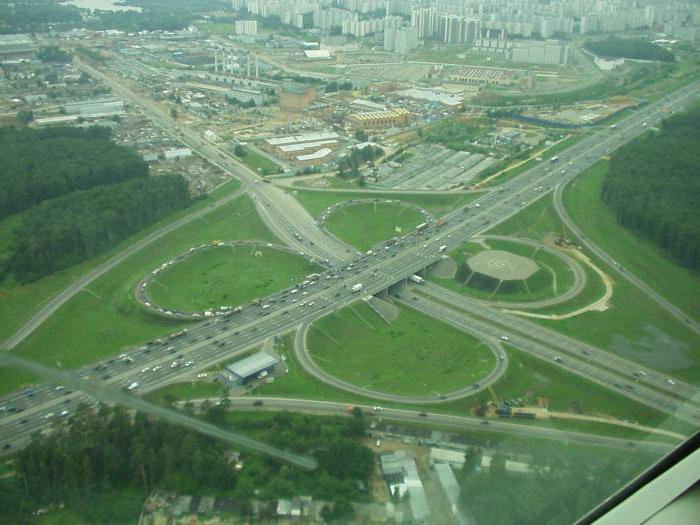 One of the requirements: Moscow expressways must pass far from residential areas and have high speeds. To solve these problems, it was decided to minimize the number of exits from the highway, and none of them lead to any shopping center. It was this move that made it possible to increase the speed on the highway to 100 km/h.
One of the requirements: Moscow expressways must pass far from residential areas and have high speeds. To solve these problems, it was decided to minimize the number of exits from the highway, and none of them lead to any shopping center. It was this move that made it possible to increase the speed on the highway to 100 km/h.
To date, the project of three such highways is known: North-East, South and North-West. All roads will have connections with the Moscow Ring Road and be connected to each other. These highways (or chords), according to the authorities, should replace the Fourth Transport Ring. For these purposes, it is planned to connect the North-Western and North-Eastern rings in the area of Festivalnaya Street, and the South Expressway will cross the North-Western in the Krylatskoye area. Thanks to this connection, drivers will be able to get from one end of the city to the other without entering the center.
All over the world, transport problems of large cities are solved through highways. Expressways take a detour along the outskirts of the city and, with the help of raised bridge junctions, leave the center of the metropolis free from unnecessary traffic. According to the project in Moscow, it is planned that the chords should not interfere, while at the same time serving public transport. This means that in order to cross residential areas, these roads must either be raised above the main part of the highway or run underground.
It also doesn’t have final numbers yet. Experts have not reached a consensus on this matter. What speed is allowed on a highway within the city? Some believe no more than 80 km/h, while others argue that if safety is improved, the speed can be increased to 100 km/h. Now, as you know, the following standards have been adopted for cities: the speed cannot exceed 60 km/h.
In Russia today, many projects have been launched for the construction of high-speed highways - both highways and railways. This indicates economic development and will contribute to the well-being of the state as a whole.
City transport network should ensure speed, comfort and safety of movement between functional areas of the city and within their limits, communication with external transport facilities and highways regional and all-Russian network. The network of streets, roads, squares and pedestrian spaces should be designed as a single city-wide system, in which the functions of its components are clearly delineated.
City transport system united by common architectural and engineering solutions that are subject to safety requirements, environmental protection and landscape features. Good organization of the transport system required modern city, are characterized by complex engineering projects, such as multi-level interchanges (intersections), the use of underground and above-ground space. In world practice, transport interchanges at five levels are already used. In the cities of our country, two- and three-level interchanges operate successfully. They increase the capacity of major highways, increase safety and improve traffic management.
Streets and roads are divided into categories according to their purpose and design speeds.
Main streets- these are the main transport channels that connect the city center with the functional and planning elements of the city, and have access to external communications. These include the main highways of the city with a red line width of 80...110 m and a design speed of 100 km/h, which are designed to carry intra-city flows of cars and freight transport to serve the area, and city highways with a red line width of 70 ...80 m and a design speed of 80 km/h to accommodate mixed traffic flows.
Main roads- these are transport channels laid bypassing residential areas between industrial and municipal-warehouse areas for the transportation of goods. These include high-speed urban roads with a width of red lines of 55...140 m and an estimated speed of 120 km/h. They have exits to external connections and intersections at different levels with other routes. The movement of vehicles with a carrying capacity of over 8 tons, trolleybuses, motorcycles and other vehicles at a speed of less than 60 km/h is prohibited.
Trunk roads also include roads with predominantly freight traffic, a width of 50...60 m in red lines and an estimated speed of 80 km/h for the passage of mainly trucks without restrictions on carrying capacity. Public transport is also allowed on them.
Main district streets with a width of up to 45 m in red lines and a design speed of 80 km/h, they provide transport links between regions and are designed to carry mixed traffic flows while limiting the movement of heavy vehicles.
Intradistrict streets width in red lines is 30...35 m and an estimated speed of 60 km/h. Designed to pass passenger cars and ground public transport, as well as freight transport serving the area within a residential area.
Category III - streets and roads of local importance , forming the basis of the planning structure functional zones. These include residential streets with a red line width of 25...30 m and an estimated speed of 60 km/h. They tie residential neighborhoods, groups of residential buildings with main streets of local importance and are intended for the movement of passenger and service vehicles.
Local freight roads with similar parameters belong to the same category and are intended for production and utility storage areas.
All elements of the transport system are fixed with red lines on the base master plan. The detailed planning of the transport system provides for the separation of oncoming flows, the allocation of traffic lanes, public transport stops and parking lots, and the drawing up of longitudinal and transverse profiles of streets and roads.
The transport part of the city should be linked to a developed system of pedestrian spaces, including pedestrian zones, pedestrian streets and areas, pedestrian communications that improve the social, functional, and aesthetic characteristics of the urban environment. In modern conditions, the need for urban pedestrian spaces is increasing. In areas being reconstructed, for this purpose, entire streets, squares, and historical centers are closed off to vehicles and made available exclusively for pedestrians.
Pedestrian areas- these are urban centers of gravity with an unlimited functional composition of objects. Here pedestrians are provided with complete safety and comfort of stay.
Pedestrian areas and streets can be of city, district and microdistrict significance with the location of one or a group of single-function objects.
Pedestrian communications - pedestrian roads, galleries, underground passages, distributors, are designed for the shortest connections.
When designing and reconstructing cities, creating pedestrian zones, squares, streets must be justified by the high concentration of objects of urban and regional significance that are attractive to the population, the density of existing pedestrian flows of more than 0.3 people/m2 or the expected 0.15...0.25 people/m2, etc. P. At the same time, it is necessary to ensure good communication between pedestrian zones and ground transport (no more than 400 m to the stop) and with high-speed passenger transport (no more than 800 m).
Pedestrian zones and streets are designed with a width of 12 to 30 m, a length of 800 to 2000 m. The length of pedestrian paths within the zone should not exceed 4 km, and the area of the pedestrian zones should not exceed 20 hectares. The density of pedestrian flows in underground passages should not exceed 0.45 people/m2. The width of sidewalks on streets of category I is taken to be 4.5...7.5 m, category II - 3...6 m, category III - 1.5...3 m.








